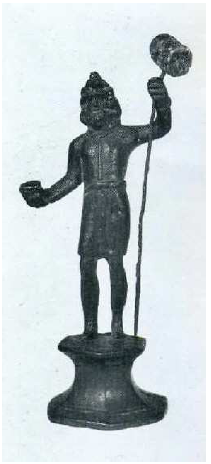D) The Gaulish Goddess Nantosuelta
The goddess Nantosuelta is known from a single inscription and two reliefs* which portray her as the consort of the famous Gaulish god Sucellus generally understood as ‘Good Striker’,679 mentioned in ten dedications from France (Ancey-Mâlain, Lyons, Metz, Vichy, Vienne), Switzerland (Yverdon and Augst), Germany (Mainz and Worms) and Britain (York), and is represented on many a relief* with his typical curly hair and beard, long-shafted hammer and olla*(fig. 5).680 Nantosuelta is an atypical goddess who differentiates herself from the other goddesses by characteristic attributes of her own which remain enigmatic. The difficulty in deciphering the essence of Nantosuelta resides in the etymology* of her name, on which scholars disagree, and her attributes, which have been the subject of conflicting interpretations.
